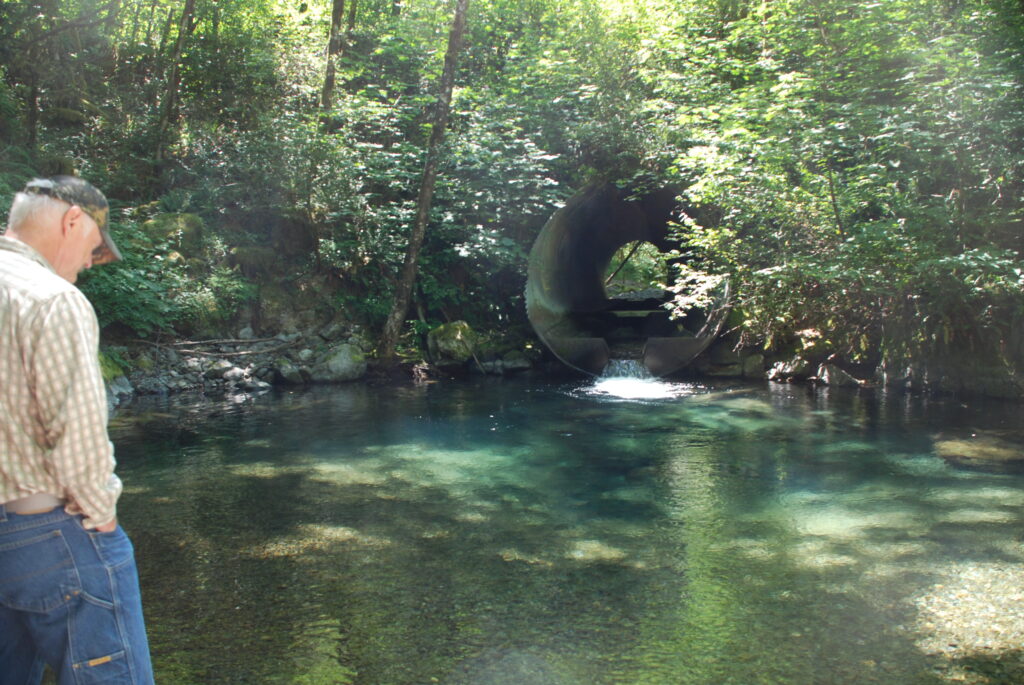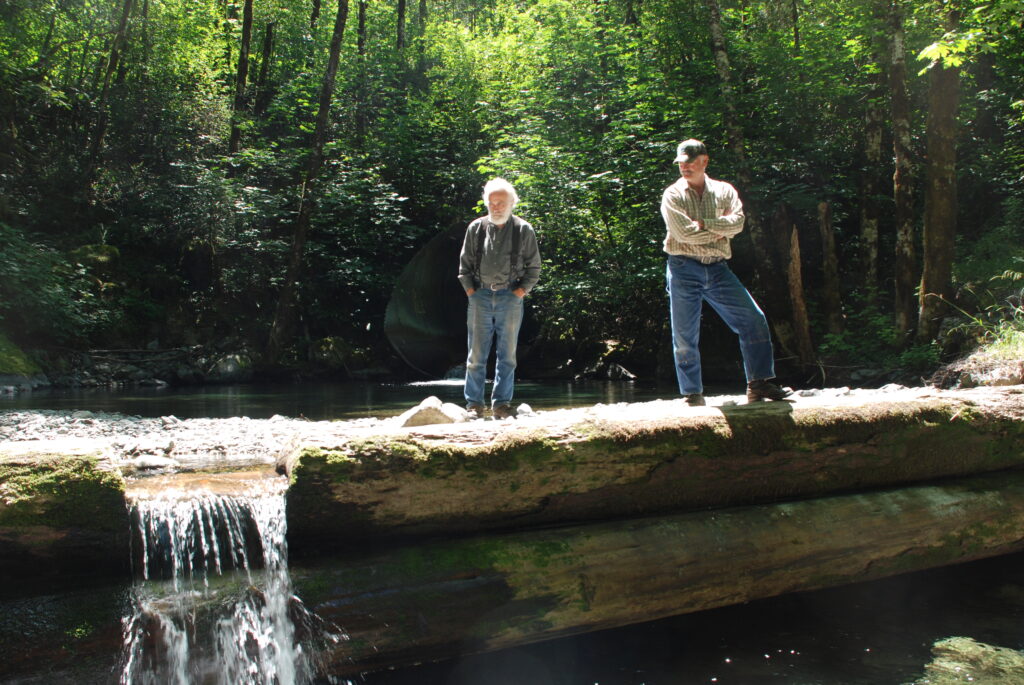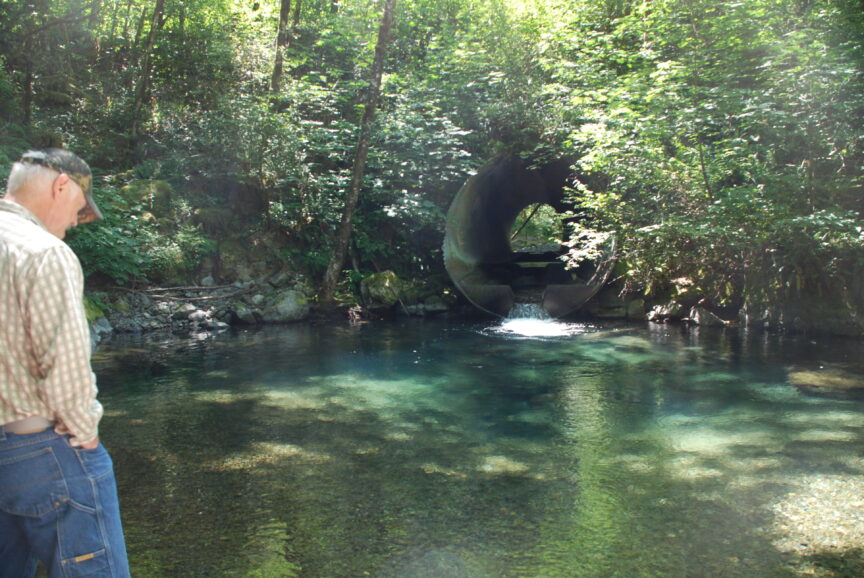
Join us in telling the Forest Service to replace a failing culvert at Blackberry Creek, a tributary of the Wild and Scenic Elk River
Blackberry Creek is a key tributary to the upper Elk River in Curry County, Oregon. The creek is located on US Forest Service managed public lands in the Rogue-Siskiyou National Forest and is part of the Powers Ranger District. This amazingly cold, clear stream provides a little over two miles of premier spawning and rearing habitat for coho, fall Chinook and winter steelhead. Sea-run cutthroat and coastal cutthroat trout also inhabit Blackberry Creek and make use of its high-quality habitat.
Trout Unlimited volunteers and staff have made large investments in the Elk River basin over the past two decades to ensure that wild salmon and steelhead continue to return to what many call “the very best salmon river in the United States outside of Alaska.” TU worked diligently to make the “Copper Salmon Wilderness” the very first “hunter and angler led” wilderness designation in the country and in 2009 Congress passed a bill that permanently protected 13,757 acres in the Elk River basin.

Now, anglers have an opportunity to ensure those protections and the past work of advocates continues to benefit salmon and steelhead.
USFS Rd. 5325 crosses Blackberry Creek where it joins Elk River via a large culvert. This culvert has been a barrier to fish passage since it was first installed decades ago.
Several attempts have been made to improve passage up the culvert and to the upstream side, but each attempt has yielded poor results.
Before salmon and steelhead even reach the culvert, they must first traverse a manmade, log-style weir to enter the main plunge pool beneath the culvert. From there, they ascend a nearly two foot tall “waterfall” to enter the culvert. Once they actually reach the inside, a series of wing dams within the culvert form a type of “fish ladder” that were installed to aid fish passage. Unfortunately, the wing dams actually impede passage because they are only effective at certain flows. If the water is too high, the wing dams are ineffective and when flows are too low, fish are unable to swim around them.
Despite several attempts to improve passage over the years, the culvert remains a barrier for fish and has the potential to cause damage to important downstream habitat if the culvert were to become plugged with debris and blow out, unleashing a massive amount of sediment.

Although removal of the culvert has been identified as a priority by the Forest Service several times over the past 20 years, the project has never risen to the top of the Forest Service’s project list due to the cost of the culvert replacement. Other projects have always taken priority. Finally, after 20 years, the project has made it to the top of the region’s priority list for funding. The Forest Service hopes to replace the culvert with a bridge that will be a better piece of durable road infrastructure for local communities and native fish.
The Forest Service is currently collecting public comments to determine which projects they will prioritize and fund this year. Please join Wild Steelheaders United and Trout Unlimited in supporting this critical fish passage project by sending in a comment in favor of the Blackberry Bridge Project.


